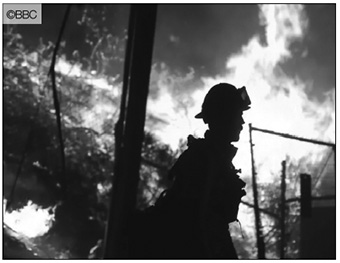The World Meteorological Organization (WMO) announced that this July has been recorded as the hottest month in Earth’s history. According to the WMO, on July 7, the average planetary temperature reached 17.24 ℃, marking it the highest temperature ever recorded in history. As the extreme heat wave persists in southern Europe, it caused a large number of wildfires, causing Greek residents to evacuate. Europe is not the only region suffering severe damage from abnormal climate. In the U.S., 40% of Americans, which is over 150 million people, constantly receive heat wave warnings. In Aug., Hawaii faced its worst wildfire in a century, resulting in 93 deaths and over 1,000 missing persons. According to local media reports in China, a week of heavy rain has resulted in 111 deaths or missing persons, and approximately 5.17 million people have lost their homes due to this disaster. Also, the scale of property damage is so extensive that it is challenging to quantify. Then, what is the reason for the deteriorated abnormal climate this year?
CBT conducted an interview with Kim Jin-young, a researcher at the Korea Research Institute on Climate Change, to find out why. According to researcher Kim, weather disasters such as wildfires and landslides are occurring around the world, and the frequency is steadily increasing. Recently, large-scale wildfires have occurred in places like Hawaii and Greece. Most of these wildfires is primarily caused by human actions or intentional arson. However, factors affecting the spread of wildfire include weather conditions such as temperature, humidity, and wind, she explained. The background of the frequentness of meteorological disasters includes weather conditions that amplify and facilitate the disasters. Indeed, in the case of Hawaii, the drought intensified suddenly several weeks before the outbreak of the wildfire. She also explained that Australia experienced its longest-lasting wildfire in 2019, a year that was the hottest and driest in Australia in the last 100 years. Researcher Kim added that while we cannot conclude that these abnormal climates are related to climate change, we cannot say that climate change is irrelevant, which is why we should continue to pay attention to climate change.
Currently, as a result of the global temperature rising by approximately 1 ℃ compared to the Industrial Age, glaciers are melting, the sea level is rising, and abnormal weather events such as heat waves and heavy rain are occurring. Researcher Kim explained that a temperature increase of just 1.5 ℃ compared to the Industrial Age, is considered the upper limit according to the international community and the Maginot Line of climate disaster. If the temperature rises by 1.5 ℃, what kind of abnormal weather will occur? Researcher Kim explained, “According to the Intergovernmental Panel on Climate Change (IPCC), a temperature increases of 1.5 ℃ would result in approximately 350 million individuals in urban populations suffering from water scarcity, and it will endanger many species. Moreover, the extreme heat wave is forecasted to increase by 8.6 times compared to the past, and localized heavy rain and droughts are forecasted to increase by up to two times.”
To prevent such severe weather disasters, the world is making continuous efforts to reduce carbon emissions. By adopting EU regulation on energy policy, EU member countries are required to achieve three specific goals by 2030. They need to achieve a 40% reduction in greenhouse gas emission compared to the level in 1990, increase energy efficiency to 32.5% based on the 2007 standard, and raise the share of renewable energy in final energy consumption to 32% by 2030. The ultimate goal of the EU is a clean energy transition based on efficient energy use and progressive decarbonization of the energy supply. From 2021, the U.S. is allocating USD 300 billion over four years for clean energy research and development in the form of a carbon neutrality policy. The industrial sector aims to achieve decarbonization through improvement in energy efficiency, electrification of industrial processes, utilization of low-carbon energy sources, and carbon capture. Through these efforts, the goal is to reduce greenhouse gas emissions by 50-52% compared to 2005 levels by 2030 and achieve carbon neutrality on continuous investments in renewable energy and carbon reduction policies by 2050.
Despite global efforts to respond to climate change, the UN Secretary-General announced, “The era of global warming has ended, and the era of global boiling has arrived.” Despite national efforts, abnormal climate is intensifying. As abnormal climate gets worse, people need to pay attention to environmental issues. To promote environmental awareness, Researcher Kim emphasized “It is time to shift from the mindset of ‘I am just a drop in the bucket’ to ‘I do it first,’ and we pay attention in environmental issues. What can CBNU students leave for their descendants? It is time to start seriously thinking about this question.”

By Park Seo-hyun
psh12183@chungbuk.ac.kr


 All
All Society & Global
Society & Global






 Park Seo-hyun
Park Seo-hyun











